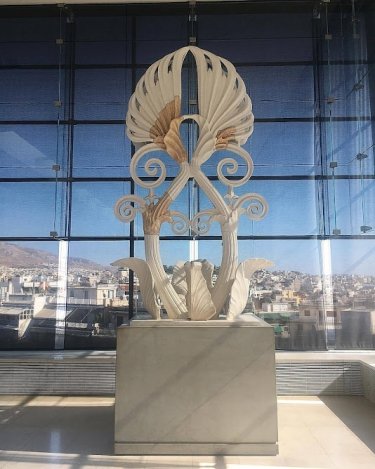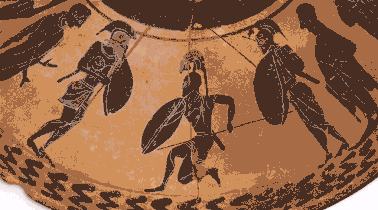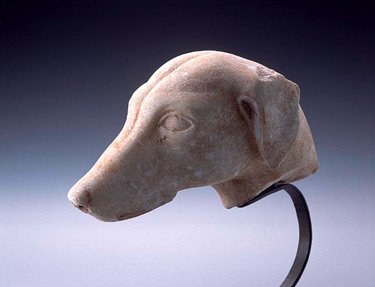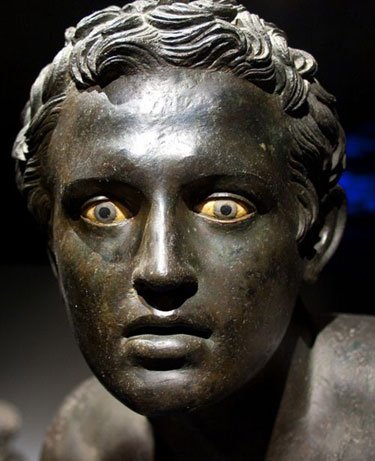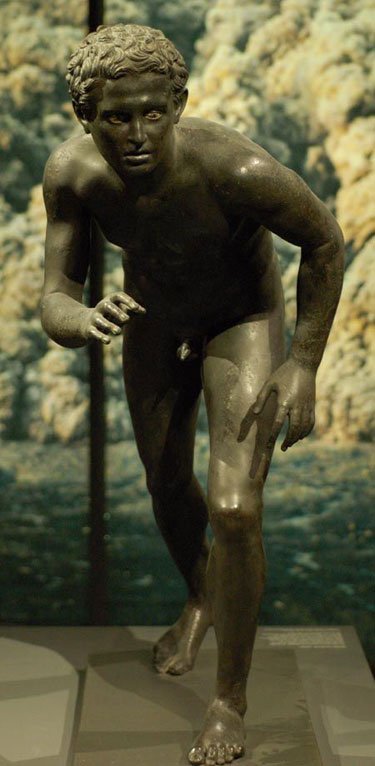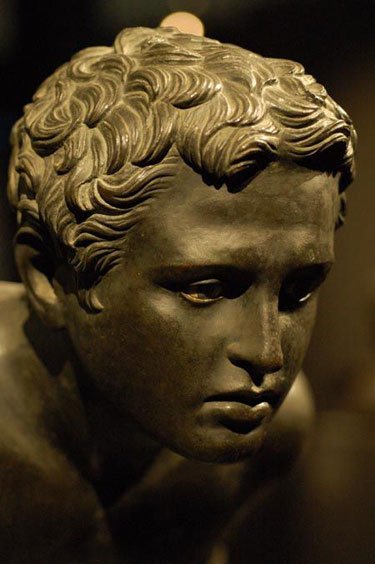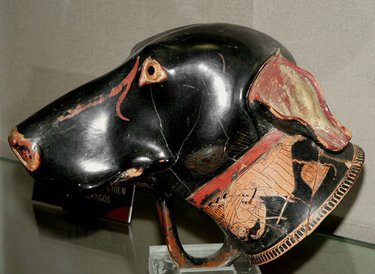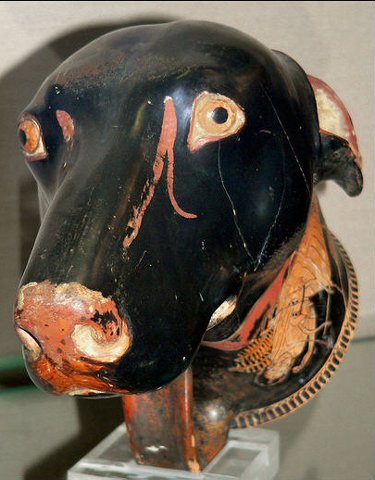———————
Dinos, Antimenes Painter, c. 520-515 BC, Cleveland Museum of Art: Greek and Roman Art
A wealthy, educated man would have served wine from such a vessel at an all-male party (symposium) in his home. In addition to drinking, the men would recite poetry and argue politics or philosophy. A favorite poet was Homer, who lived about 850 BC, and is credited with having written the Iliad, the epic poem of the Trojan War, and the Odyssey, the book of Ulysses (Odysseus in Greek) travels after the war. When the dinos was filled to the rim, the ships painted on the inside appeared to float on the “wine-dark sea,” one of Homer’s most famous poetic descriptions. The decorations on the rim of this vessel include battle scenes, perhaps from the Trojan War, and scenes from mythology. Look at the rim as if it were a clock’s face. In addition to the nine scenes of warrior combat, at 4:00 there is a scene of Herakles Fighting a Centaur; at 6:00, Theseus Slaying the Cretan Minotaur; and at 10:00, Herakles Wrestling the Nemean Lion. On the interior rim five warships with boar-head prows sail over a wavy sea.
Size: Diameter: 50.8 cm (20 in.); Overall: 33.6 cm (13 ¼ in.); Diameter of rim: 34 cm (13 3/8 in.)
Medium: black-figure terracotta
https://clevelandart.org/art/1971.46
